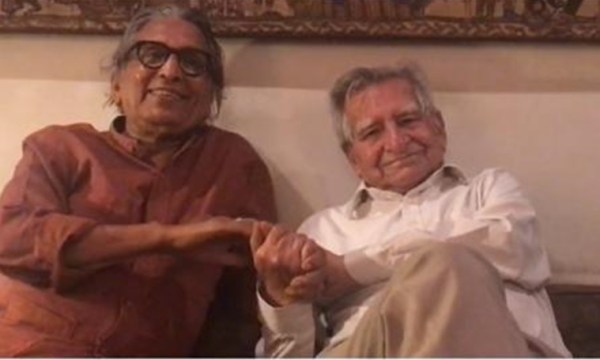 File photo of India's leading structural engineers Mahendra Raj.
File photo of India's leading structural engineers Mahendra Raj.Structural engineer Mahendra Raj, known for some of the iconic buildings in modern India, including the Hall of Nations in Pragati Maidan, New Delhi; Salarjung Museum, Hyderabad; Municipal Stadium and Sports Complex, Ahmedabad, passed away Sunday morning at his residence in Delhi. He was 97.
One who worked with all leading architects across the country to create some wall-bending innovations, Raj brought poetic beauty to concrete. Be it the floral relief on the roof of the flower market in Chennai (1985-97), the structural lightness he achieved on the ground with the Hall of Nations (1971-72), or the paper clip-like inclined folded legs of the Ahmedabad Stadium (1962-65). Many of the buildings were India’s first on the world architectural map because of Raj’s innovations. In his career spanning over six decades, he brought engineering finesse to over 180 structures across India.
 Architect BV Doshi with Mahendra Raj ( Photo courtesy: Doshi)
Architect BV Doshi with Mahendra Raj ( Photo courtesy: Doshi) “He was a mentor and a guide all through my life. My career’s best buildings, I owe to Raj. These days, there is really not much to talk about in terms of innovations in the profession. The quality and grace of life come only when there is a creative mind behind it. And Raj was such that any mundane thing would become graceful. He was a gardener for all architects, he created beautiful things for us. He never saw problems, he found solutions. We have lost a great person; for me, he was an elder brother. He was one of the most creative, artistic engineers I have ever met,” says Pritzker Prize winner architect B V Doshi, who worked with Raj on many projects, including the Indian Institute of Management, Bangalore, and Tagore Hall, Ahmedabad.
After his civil engineering from Lahore in 1946, Raj joined the Punjab Works Department Buildings and Roads, and was later the executive engineer working on Le Corbusier’s buildings in Chandigarh. Architect Sanjay Kanvinde says, “Even when he was a junior engineer with Corbusier on the Chandigarh High Court (1951), he with his senior proposed modifications, which resulted in the balanced cantilever, supported on two columns, with the fins, we see today. Later for the Secretariat too, he presented alternatives to Corbusier, which the French-Swiss architect finally accepted.”
Best of Express Premium
His work with Corbusier inspired him to go abroad for further studies, after which he moved to New York and worked at Ammann Whitney Consulting Engineers till 1959. He began Mahendra Raj Consultants in Mumbai in 1960. By then, he had met late architect Charles Correa, with whom he built the Hindustan Unilever Pavilion in Pragati Maidan in 1961. Quite like a crumpled sheet of paper, it was a maze of ramps and platforms enclosed by walls, some caving in, some slanting out. Ten years later, he would open his Delhi office.
“Almost every building of architectural importance in the country, from the seventies to the nineties, has Mahendra Raj’s stamp on it. He knew how to articulate an architect’s vision through his structural expression. He was a balanced human being, and it showed in his life and buildings. All his work has structural robustness and he would bring to shape any building any architect wanted,” says architect and urban designer K T Ravindran.
“His passing is a great loss to India and personally, for me. He was a dear friend, very warm, and he brought a personal touch to every interaction we had,” he says. Ravindran also mentions that Raj was a model for Brylcreem in the early years and was a marathon runner even until his late seventies.
“His going is a deep loss. He carried modern Indian architecture on his shoulders. Ours was a jugalbandi. We did many projects together. He had a deep understanding of the architect’s intent, and helped to carry forward the idea. His rigour and skill in drawing details are unmatched,” says Raj Rewal, with whom he designed the Hall of Nations.
Raj also helped frame the legislation for the regulation of the profession of engineers, which resulted in the government establishing the Engineering Council of India in 2002. An active member of the International Federation of Consulting Engineers, he has many awards and recognitions to his credit.
- The Indian Express website has been rated GREEN for its credibility and trustworthiness by Newsguard, a global service that rates news sources for their journalistic standards.

